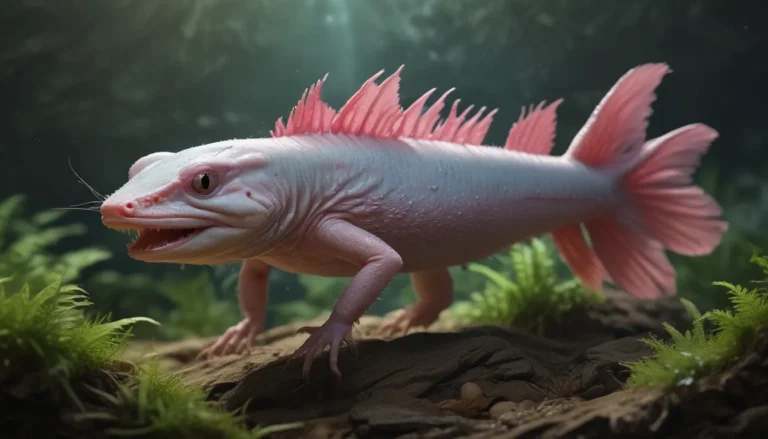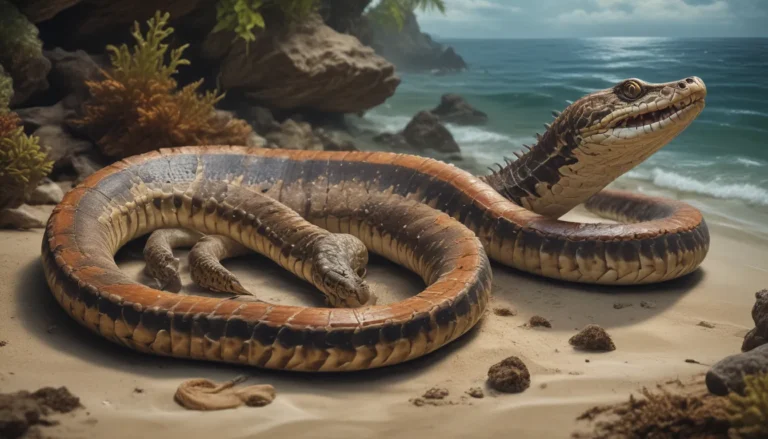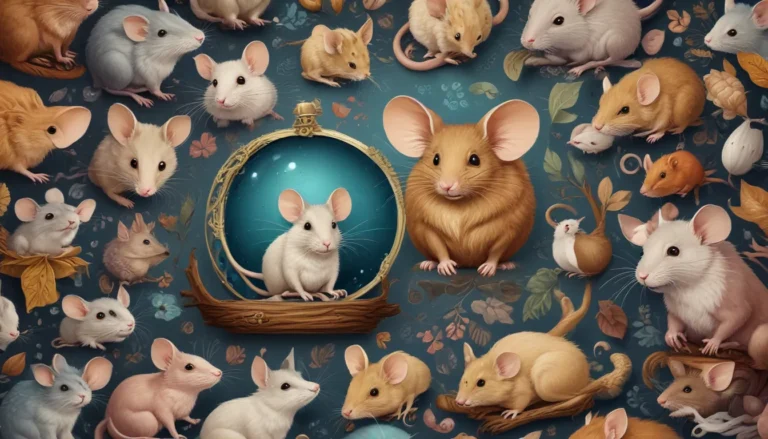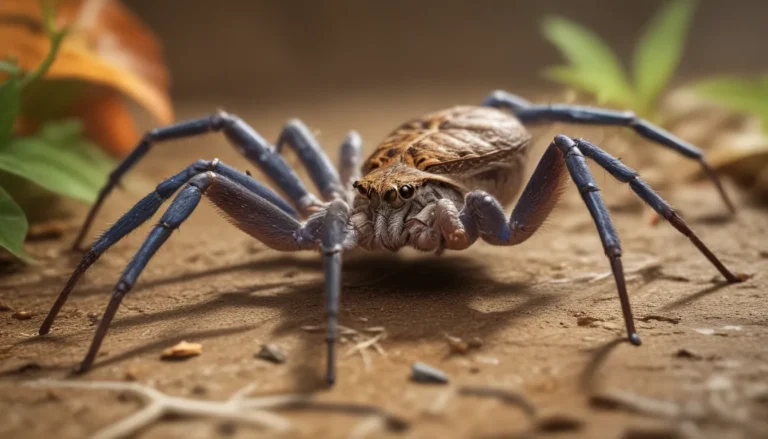The pictures we use in our articles might not show exactly what the words say. We choose these pictures to make you interested in reading more. The pictures work together with the words but don’t take their place. The words still tell you the important facts.
Are you ready to venture into the mysterious world of the Rhinoceros Viper? This captivating snake species, known for its horn-like scales and vibrant colors, dwells in the rainforests of West and Central Africa. Join us as we unravel 13 intriguing facts about this enigmatic creature, from its unique hunting strategies to its vital role in the ecosystem. Let's embark on a mesmerizing journey into the realm of the Rhinoceros Viper!
Unveiling the Mystique of the Rhinoceros Viper:
- The Rhinoceros Viper, with its horn-like scales and vibrant colors, is a venomous snake found in African rainforests.
- It hunts small mammals and birds using its unique hunting strategy.
- Despite facing threats from habitat loss and poaching, the Rhinoceros Viper plays a crucial role in its ecosystem by controlling the population of small animals.
The Fascinating Features of the Rhinoceros Viper:
1. The Origin of Its Name:
The Rhinoceros Viper, scientifically known as Bitis nasicornis, derives its name from the horn-like scales on its snout. These unique scales resemble the horns of a rhinoceros, giving the snake a distinctive and captivating appearance.
2. Habitat and Distribution:
This mesmerizing snake species inhabits the dense rainforests of West and Central Africa, including countries like Cameroon, Gabon, and Nigeria. It thrives in habitats with trees, shrubs, and rocky areas where it can effectively blend in with its surroundings.
3. Vibrant Coloration:
The Rhinoceros Viper is renowned for its vibrant array of colors, ranging from shades of brown, green, and orange to striking patterns and markings. These colors serve as a warning signal to potential predators, signifying the snake's venomous nature.
4. Potent Venom:
Armed with potent venom, the Rhinoceros Viper injects its prey using its long fangs. The venom, primarily hemotoxic, aids in subduing and digesting the prey, showcasing the snake's predatory prowess.
5. Unique Hunting Strategy:
As an ambush predator, the Rhinoceros Viper employs patience and stealth to capture its prey. With exceptional camouflage and lightning-fast strikes, it secures its meals of small mammals and birds with precision.
6. Reproductive Behavior:
Unlike egg-laying snake species, the Rhinoceros Viper is viviparous, giving birth to live young. The female viper nurtures the embryos internally until they are ready to enter the world.
7. Sensory Adaptations:
Equipped with heat-sensitive pits on its head, the Rhinoceros Viper can detect warm-blooded animals through infrared radiation. This sensory adaptation allows the snake to locate prey even in challenging environments.
8. Behavior and Vocalization:
With a sedentary nature, the Rhinoceros Viper establishes and defends its hunting territory within the rainforest. When threatened, it emits a distinctive hissing sound as a warning signal, deterring potential predators.
9. Lifespan and Threats:
In the wild, the Rhinoceros Viper can live for 10-20 years under ideal conditions. However, it faces threats from habitat loss due to deforestation and poaching for its striking appearance and venom.
Sustaining the Ecological Balance:
10. Ecological Importance:
As an apex predator, the Rhinoceros Viper plays a vital role in its ecosystem by controlling the population of small mammals and birds. Its presence contributes to the intricate web of life within the rainforest, preserving the balance of nature.
Embracing Conservation Efforts:
11. Conservation Status:
While currently listed as a species of least concern on the IUCN Red List, the Rhinoceros Viper faces challenges from human activities. Preservation of its habitat and enforcement of anti-poaching measures are essential for safeguarding this unique snake species.
Honoring Nature’s Marvels:
12. Appreciating Wildlife Diversity:
The enigmatic charm of the Rhinoceros Viper highlights the diversity and wonders of the animal kingdom. By exploring and understanding these captivating creatures, we gain insight into the intricate connections that sustain our planet's biodiversity.
Join the Journey:
13. Embark on Discovery:
Delve into the world of the Rhinoceros Viper and uncover the secrets of this mesmerizing snake species. Engage in the exploration of nature's mysteries and embrace the awe-inspiring beauty of the animal kingdom.
FAQs:
Curious minds seek answers to common questions about the Rhinoceros Viper:
- What is the habitat of the Rhinoceros Viper?
- How does the Rhinoceros Viper get its name?
- Are Rhinoceros Vipers venomous?
- What is the typical size of a Rhinoceros Viper?
- What do Rhinoceros Vipers eat?
- Are Rhinoceros Vipers aggressive towards humans?
- Do Rhinoceros Vipers have any predators?
- How long do Rhinoceros Vipers live?
- Are Rhinoceros Vipers endangered?
- Can Rhinoceros Vipers be kept as pets?
Exploring the Splendor of Nature:
As we navigate the realms of wildlife wonders, let us celebrate the enigmatic beauty of creatures like the Rhinoceros Viper. By embracing curiosity, respect, and conservation efforts, we uphold the magnificence of biodiversity and ensure a harmonious coexistence with nature's remarkable creations.
Unravel the mysteries of the animal kingdom with our captivating insights and discover more about the mesmerizing creatures that inhabit our planet's diverse ecosystems. Dive into the wonders of nature and let the enchantment of wildlife inspire your journey of exploration and discovery. Join us in celebrating the extraordinary beauty and complexity of the natural world as we continue to learn and appreciate its boundless wonders.






